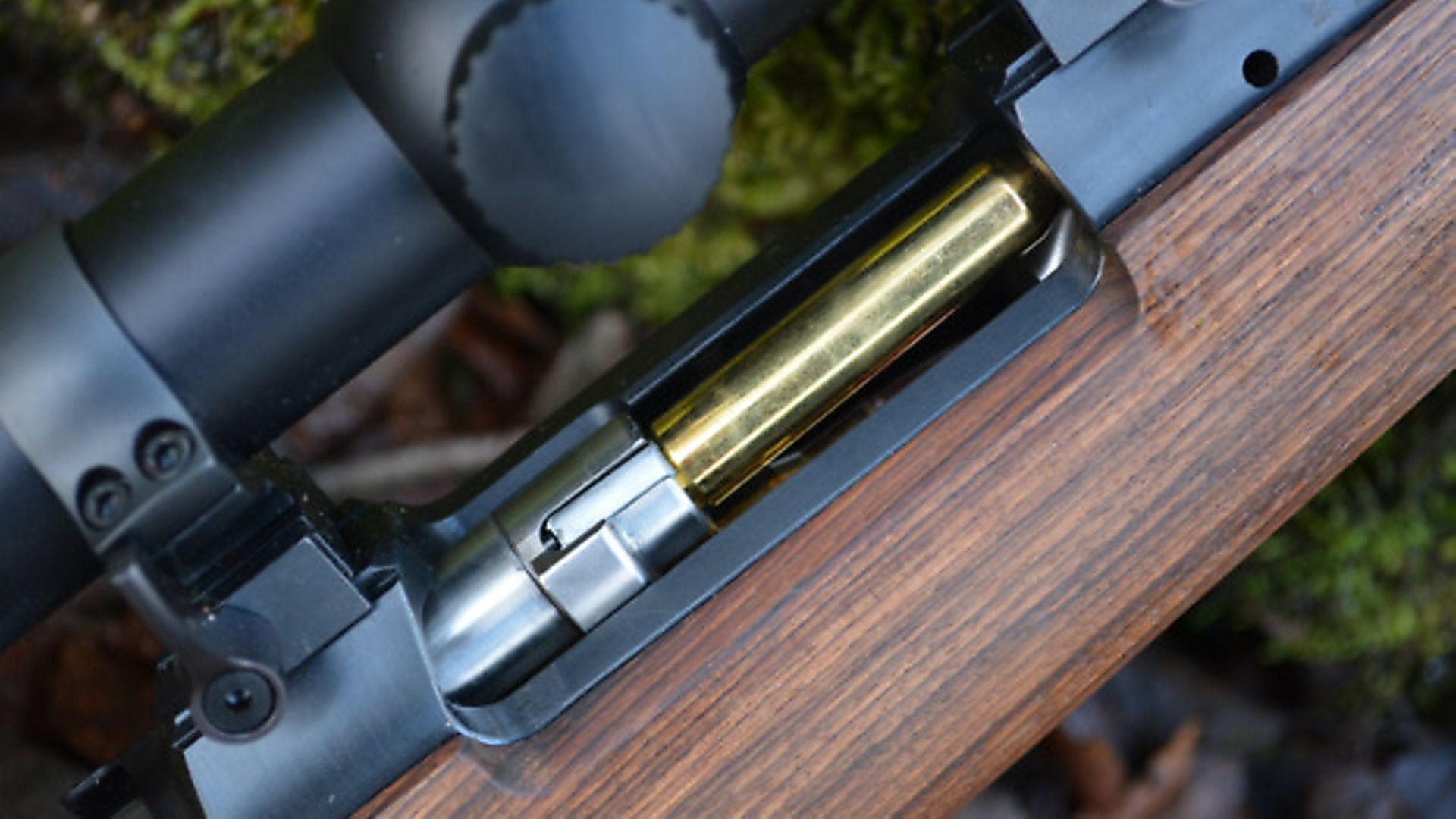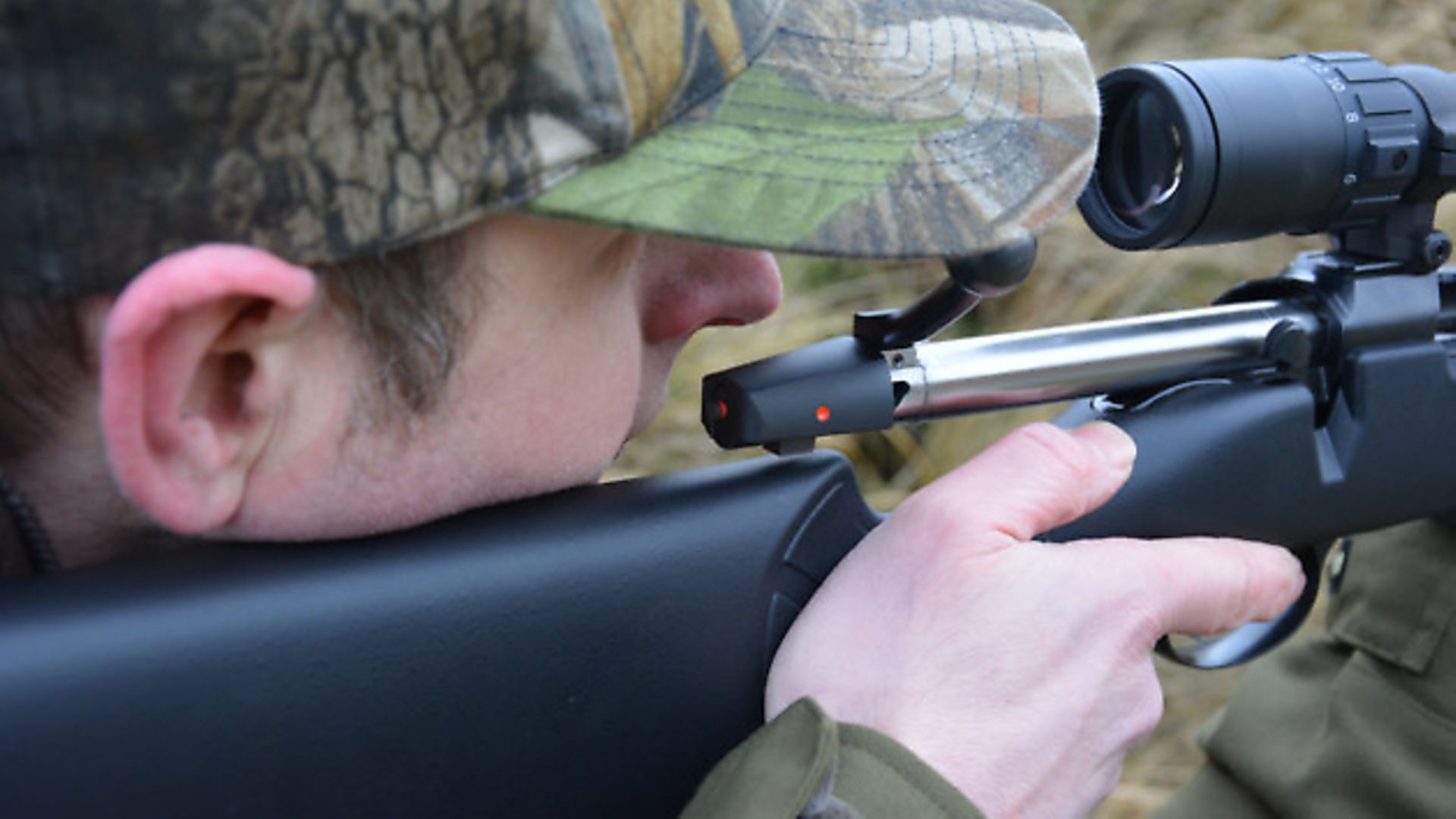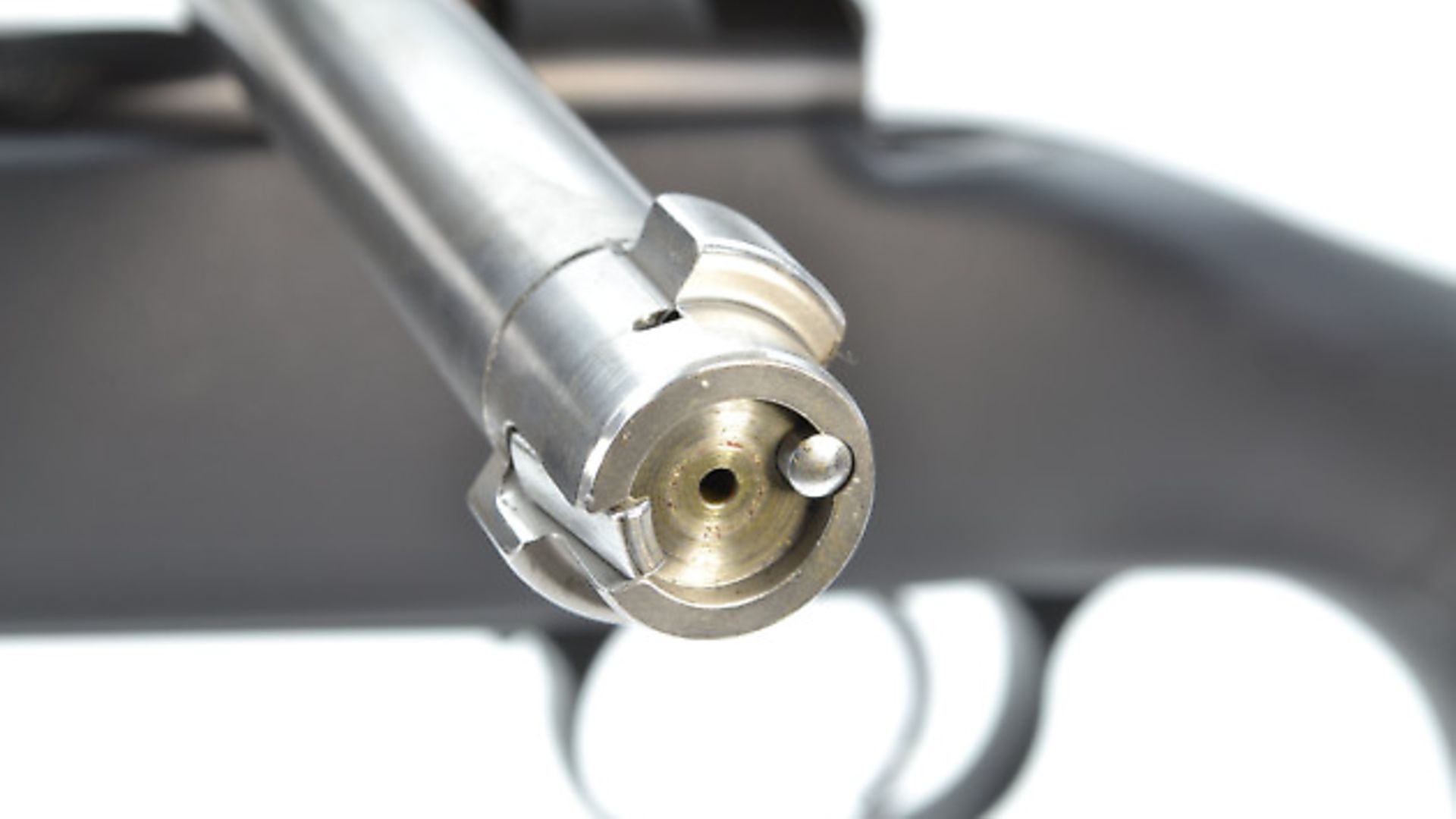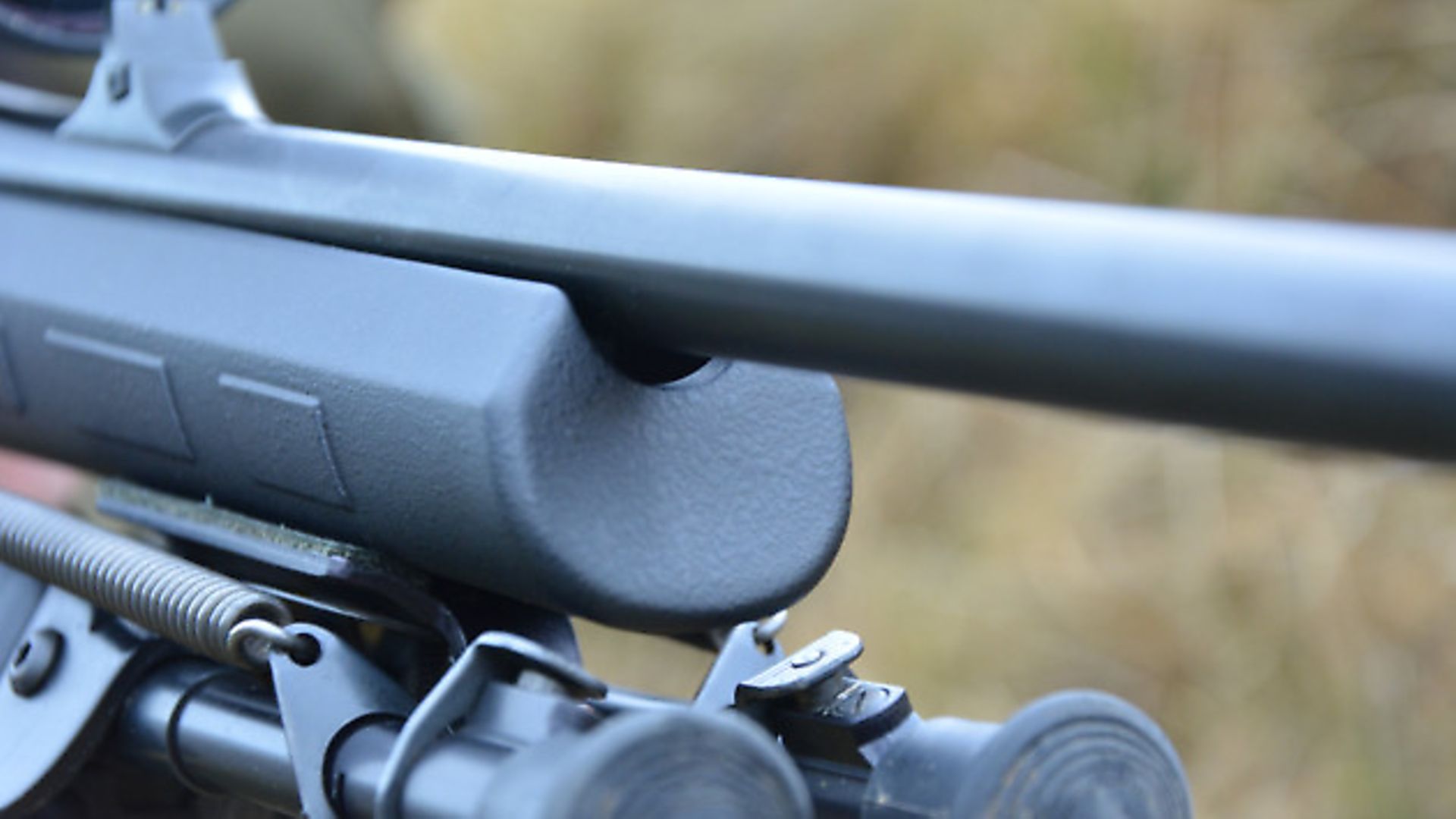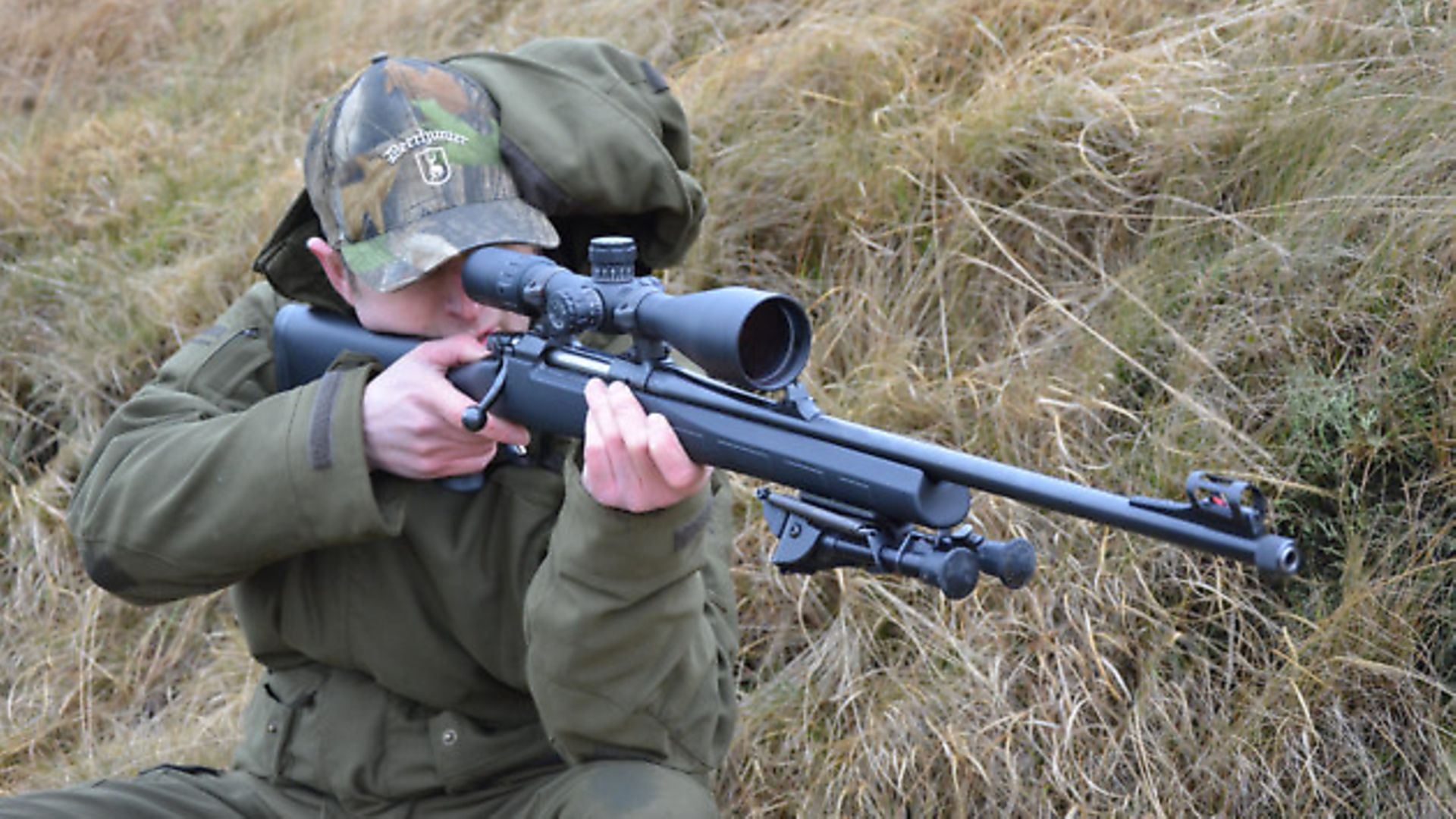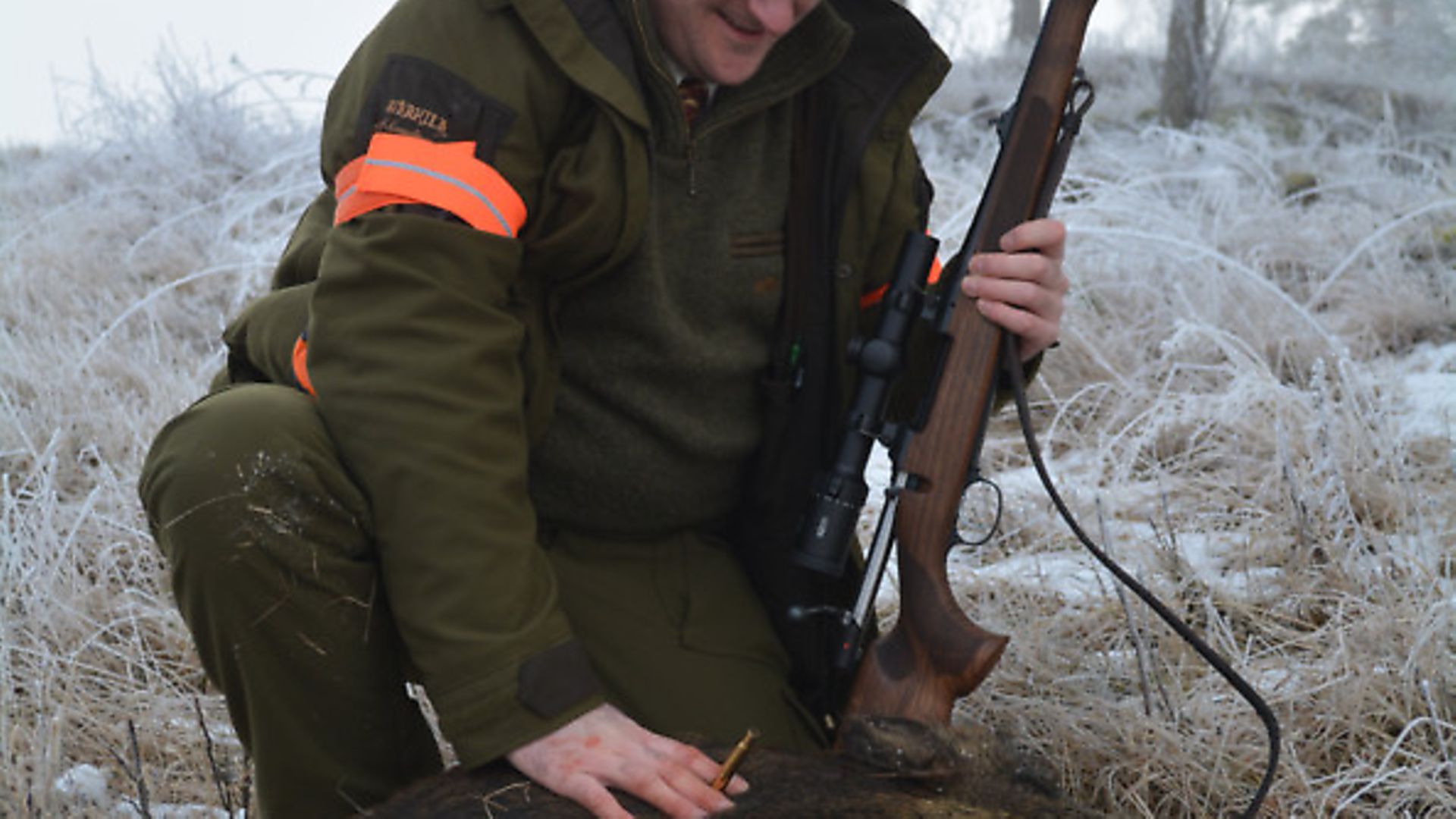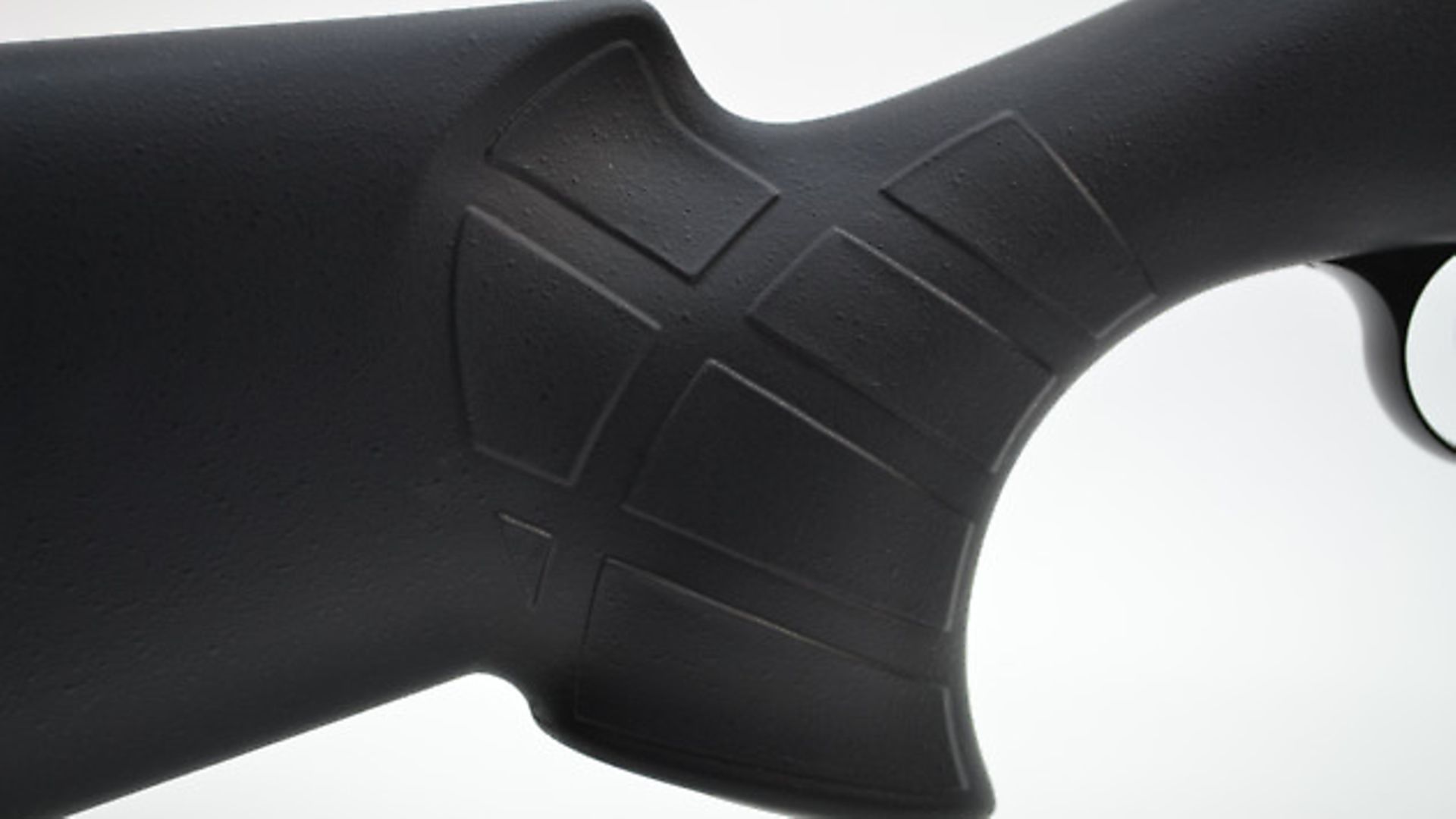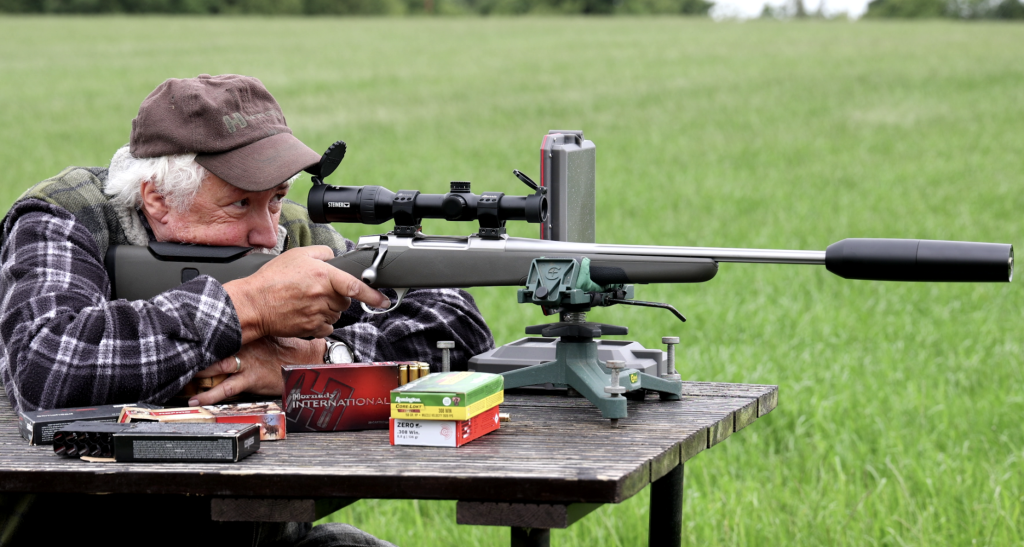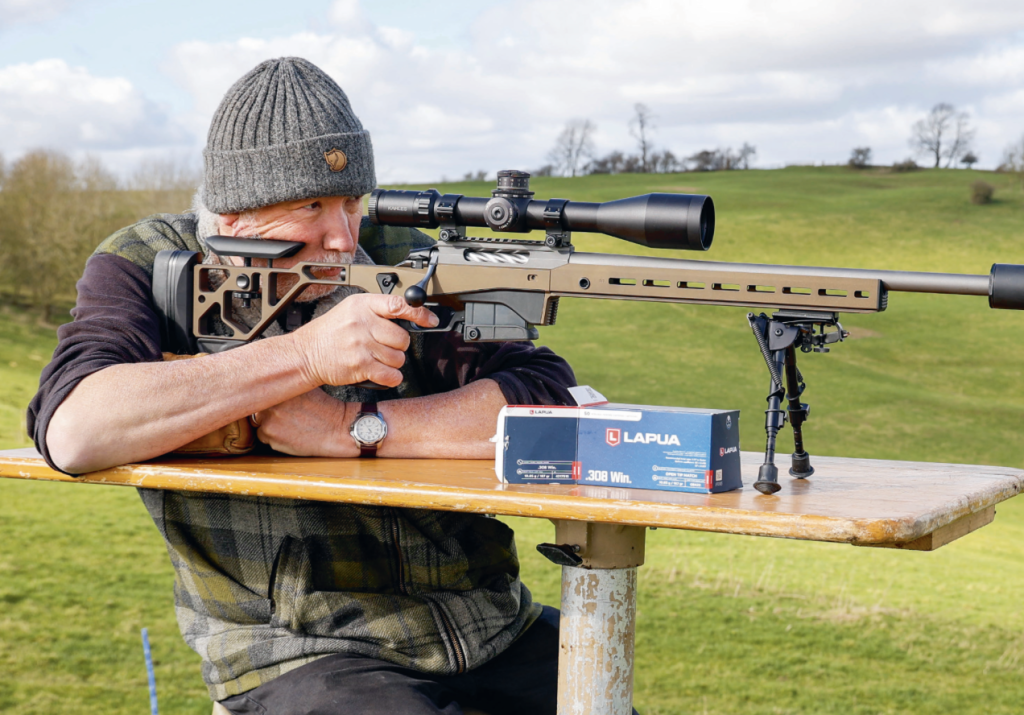CZ 557 Sporter Synthetic – in depth rifle review

Chris Parkins tests the CZ 557 Sporter Synthetic rifle. It’s the next best thing to ‘try before you buy’
Pros
Fantastic synthetic stock which really does fully float the barrel
Very stable barrel
Slick bolt operation
Good trigger
Cons
Only in long action
Fiddly bolt release catch
Opinion
CZ really moved forward from the 550 here, but I’d like to see two action lengths to handle more sporting calibres efficiently. This synthetic stock is a masterpiece I want to see on more CZ rifles! Build quality at the price is very good, with slick controls.
Specification
Model: CZ 557 Sporter Synthetic
Calibre: 308 Winchester (243 and 30-06 available)
Magazine Capacity: 5 round floorplate
Barrel: 520mm/20.5” Hammer forged screwcut ½” UNF (1 in 10” twist rate)
Length: 1042mm/41”
Weight: 3.3kg/7 ¼ lbs
Length of pull: 362mm/14 1/4”
Trigger pull: 1300gr/2 ¾ lbs (adjustable)
Accessories: Open sights fitted
Contact
Edgar Brothers
01625 613177
Price
£853
IN DEPTH
A couple of years ago I was a guest of Meopta in the Czech Republic and, alongside some of their superb optics, the wild boar hunt – a real baptism of fire – was accompanied by the then unseen CZ 557: a luxe rifle in walnut furniture, chambered in the redoubtable .30-06. Given that the gun was thrust into my hands, along with a box of ammo, which I was told it was zeroed to, ‘baptism of fire’ certainly seemed to fit the bill. There was to be no test firing, no nothing… just get on with it!
I actually had more concerns over picking out the correct maturity and sex of the quarry so, when I had five minutes alone to familiarise myself with the rifle, it was nice to handle a gun that immediately felt so right. I had recently used a CZ 750, which had been a little temperamental on feed and ejection from the long-action Mauser clawed bolt, and to see the 557 with a brand-new push-feed unit and claw extractor immediately washed away any hesitancy. Dry firing, in misty conditions among the forests as dawn broke, indicated a decent trigger with a tiny amount of creep but, most importantly for a driven hunt – my very first – the gun felt really slick to handle. It pointed like a shotgun which, up to this point, was the sum total of my experience on live, moving game, even though I had shot plentiful driven boar training targets. I loaded up and, with safe muzzle awareness, ran a few loading and reload drills with no hiccups. I felt very much at ease as I heard beaters banging through the forest in the freezing morning air. I felt relaxed and just a little excited as I scanned my safe arcs of fire. Repetitively shouldering the gun, I felt happy and confident… why so? Well, the 557 just had that solid feel; it just felt right.
Back in the UK, some two years on, I received my first test rifle, and this time it was slotted into the latest CZ synthetic stock. I’m not a huge fan of synthetics. Yes, they are very durable, rugged and cheap, but they always seem designed around the same blueprints as walnut stocks and, sadly, the short fibre-reinforced injection moulded polymers aren’t physically stiff enough to retain solid mechanical integrity from all positional shots. They are fine if you are careful and if you need to be really deliberate, but who has the time, or wants that risk of intermittent barrel contact causing a miss, or, worse still, a wound! Tooling-up is the expensive part of the manufacturing process, and it disappoints me to see designs not adapted to the materials in use. Although some are better than others, few really impress me or strike me as technically faultless. Well, with this CZ, I’m going to start this article where I would usually end it, because, from the first second I handled the stock, it impressed me hugely!
The stock’s profile shows a heavier, semi-beavertail fore-end that fills the hand well, and floats the barrel by a good 2.3mm and absolutely parallel, all the way back to the action with no hint of a bend or curve. It shoots perfectly from a bipod, even when deliberately brutally handled, and the profile allows it to fill your hand in any improvised position without your fingers and thumb touching the barrel. External ribs are moulded into both grip and fore-end which, combined with the slightly soft-touch feel of the gun, are totally assured in wet or dry conditions. The grip is quite tightly radiused, which looks very modern on a rifle. It is very well proportioned, certainly for my hands, allowing the elbow to stay outward and your thumb to wrap well over the top for a solid hold. The pronounced lip at its base keeps your hand from slipping away below, too. None of these compromise reach to the trigger, and the delicate palm swell is ambidextrous. The comb drops away from parallel very slightly over its length, with 14¼” length of pull, and feels superb to shoulder with a one-inch thick rubber recoil pad that grips the shoulder pocket well, its ribs similar to those of the stock’s grip sections. It doesn’t snag when mounted, and the hardness of the rubber, controlled by internal voids in the moulding, is ideally designed to make heel and toe very slightly stiffer than the centre of the pad, yet neither will dig into you when firing, which is a real bugbear of mine. The comb is reasonably high, considering the action’s bolt must ride easily above it, yet it remains slim in profile to allow your head to stay vertical with eyes horizontal when the correct eye relief is maintained; I dislike thick combs that your head has to ‘roll over’, disturbing your eyes and peripheral vision. This is the best synthetic stock (in fact, almost any stock) that I have used. Full stop. Well done, CZ!
I first expected to see this stock/rifle combo in a sporter or varmint rifle/calibre, but the Synthetic Sporter that was supplied to me was a slightly strange combination to my mind. There is only one action size and bolt-face diameter available so far and, although .308 is a fantastic calibre and the .243 a very popular all-round rifle for UK use, the action is made and consequently scaled for 30-06 length cartridges. Overall length for a .308 is 2.810” or 71.4mm, which is significantly shorter than the 557’s 123mm bolt-stroke length, and this leads to a few compromises. The gun feeds from a five-shot floorplate magazine, loaded from the top through a generous ejection port, and unloaded beneath by sliding a sprung button within the front face of the all-metal trigger guard/bottom metal. The bolt stroke is 123mm but, unlike a Tikka T3 which is also a long-action, there is no magazine filler or calibre-specific bolt stop, so the rounds still fit to the rear of the mag well and the bolt still travels fully rearward… almost into your face. This has two slight drawbacks. Firstly, although I’m not one to get paranoid like the Americans do over action length/stiffness, I do find that a bolt that is very close to your face and nose is less likely to get fully cycled as you will at some stage catch yourself, and this implants a cautious approach into your psyche. Secondly, the big space in front of the loaded rounds can allow them to shuffle about under recoil, and this happened on two occasions. The rounds that sit staggered into two columns are centre-fed by the push-feed bolt, and they jammed in the gun and led to dry-fires or a jammed bolt itself. This is also combined with the fact that some were true misfeeds because the bolt was not fully cycled rearwards to pick up a round, which is operator error, but a well-designed mechanical tool should do its utmost to prevent such human errors. When loading, it’s like a separate mag-fed gun – it never hurts to double and triple check that rounds are fully rearward in the floorplate magazine, and you must be aggressive with the bolt.
All this is somewhat at odds with the bolt, which shows creamy-smooth cycling, positive primary extraction, and well-weighted ejection from the bolt-face plunger. The 65mm-long handle has a 19mm ball-end to it and, being a twin-lugged bolt, lifts 90 degrees to open and clears the scope’s ocular body with ease. This is a definite move towards modernity in bolt design for CZ, who have up until now retained the full-length Mauser claw extractor, and this 557 update has been designed splendidly. All metalwork, either blued or polished, is beautifully executed with gleaming finishing standards, as is all machine work on the barrel and action. The trigger is polished steel with a moderately curved, 8mm-wide blade. It does creep a little, with approximately 2mm of tip movement before firing, but no grittiness is felt before the 1,300g break. It’s predictable and easy to live with, and there’s plenty of space for a gloved finger within the trigger guard. It is adjustable with caution and respect for the single sear limitations.
A cocked-action indicator sits centrally within the bolt’s shroud, which, again, is all metal, and it is both visible, with a red band, and tactile to a thumb in the dark. To its right-hand side, the safety has a silent rolling feel to it whereby the thumb can operate it. Gloved, however, it feels a little small, although still operable with good control offered by the tip, which is diamond shaped to generate good grip and feel. Forward for fire and rearward for safe, the bolt does not lock closed. When releasing the bolt it actually takes a second to find the release catch that nestles a little too unobtrusively to the left of the bolt shaft, where it is concealed in use by the shroud anyway. It is very neat, but it needs a serious press with a long, strong fingernail to operate it. Two T30 Torx screws hold the action into the stock, where it has twin recoil slots across the broad bedding surfaces below. Both are behind the barrel’s tenon area, and accurately engage with opposing elements in the stock’s inlet to engage and transfer recoil forces with no hint of sloppiness. The fit is secure and repeatable, and altering torque on the screws shows no awkward action stress. Both are countersunk into the floorplate, which is fitted precisely into the precision-moulded stock. I quite like the fact that the proof marks have been engraved on the barrel’s underside, as it keeps them from spoiling the lines of the metalwork, which flows smoothly into the barrel’s reinforce, swamping down to 20mm at the rear sight and 15.5mm at the ½” UNF screw-cut muzzle. A knurled thread cap is supplied, which is easy to keep tight. Both foresight and rear sight are removable, which you will have to do if fitting a reflex moderator, although Edgar Brother’s own Macctecc end-of-barrel units are superb for such compact lightweights. The foresight has a fibre-optic red pin, for visibility, below a cage with slots to let plenty of light in for illumination, making it fit comfortably into the windage-adjustable ‘U’ notched rear sight. Twin screws on each mean that nothing is brazed in place; in fact, they came loose on their own anyway, so if you are likely to use them, a spot of Loctite may well be advisable. With the stock optimised for a scope set-up, you actually need to weld your cheek in quite firmly for open sight usage, but this is also dependent on your cheekbone and is, after all, what real shooting fun is all about. I secretly love opens; they bring fun back into shooting.
Both action bridges are meaty with 8mm of steel above the bolt-shaft circumference. They are flat-topped with dovetails machined into them for scope mounting. The dovetails are a bit like a giant air rifle or rimfire set-up, and are just over 19mm wide. I was supplied a one-piece Kozap Picatinny rail, although this proved a little high for a sporting rifle optic, even with low rings. However, on a larger scope with a 56mm objective it would have proven useful and, when night vision gets involved, a great asset. Next, I tried a set of Millet twin rings that clamped (in the usual dovetail way) directly to the receiver. These were more appropriate for a compact optic. The rear action bridge has a deep rebate cut into it on the left side, and the Milllet rings use this; one of the claws/feet is slightly extended and acts as a recoil lug, fitting onto both the dovetail and into the rebate, although it’s not clearly marked in the instructions, so beware and make sure! I only noticed through careful inspection. The claws are independent so some windage adjustability is inherent within them, although this does effectively torque the scope tube, unless perfectly central. The claws have very small Allen key fittings, so take care to fully tighten them without damage and, although these rings did work, I preferred the slightly meatier ones from Kozap that I used on my first 557 jaunt in the Czech Republic.
I found it very comfortable to shoot with these stock ergonomics and mechanics, for which CZ should get a prize; they are fantastic! Recoil on the .308 is snappy but not serious, and was well-directed in a linear fashion towards the shoulder, with minimal muzzle lift. CZ hammer-forge their barrels, and three-shot groups with Hornady SST 150 Superformance ammo were perfectly deer capable from any position. As I said, great stocks always help. I only used the gun on the range as I wanted to keep Allen keys to hand for the scope mounts, but one inch at 100 yards was regularly possible, and even in windy conditions I was hitting a tennis ball one shot in every three at 400 yards (and never more than a few inches away on the misses, which is far beyond stalking distance, but very reassuring in practice). It’s tricky to define a barrel profile, but the one in 10” twist will handle any suitable .30 cal ammo, and I found the short length very pointable and slightly heavier in profile than is usually found on sporters… in the barrel taper perhaps?
There is a little more heft in the front end of the gun and, although the lightweight fans may find extra grams to their distaste, I can’t help but comment on how well the gun pointed, shot and reacted to rapid fire situations when practising on balloons, with the open sights, at 50m. But I would really want to see better scope mounts and, personally, I’d have the .30-06 in this action, as it is made for one! It just works far more reliably with little more recoil, and if you do venture overseas, ammo selection is just as good, but the ability with 180-200gr bullets offers a slight advantage. I will never forget my first driven boar and the gun that accompanied me, so I do have a soft spot for the 557, but it needs a few tweaks to show its true colours when set up differently to how I first encountered it
Related Articles
Get the latest news delivered direct to your door
Subscribe to Rifle Shooter
Elevate your shooting experience with a subscription to Rifle Shooter magazine, the UK’s premier publication for dedicated rifle enthusiasts.
Whether you’re a seasoned shot or new to the sport, Rifle Shooter delivers expert insights, in-depth gear reviews and invaluable techniques to enhance your skills. Each bi-monthly issue brings you the latest in deer stalking, foxing, long-range shooting, and international hunting adventures, all crafted by leading experts from Britain and around the world.
By subscribing, you’ll not only save on the retail price but also gain exclusive access to £2 million Public Liability Insurance, covering recreational and professional use of shotguns, rifles, and airguns.
Don’t miss out on the opportunity to join a community of passionate shooters and stay at the forefront of rifle technology and technique.




